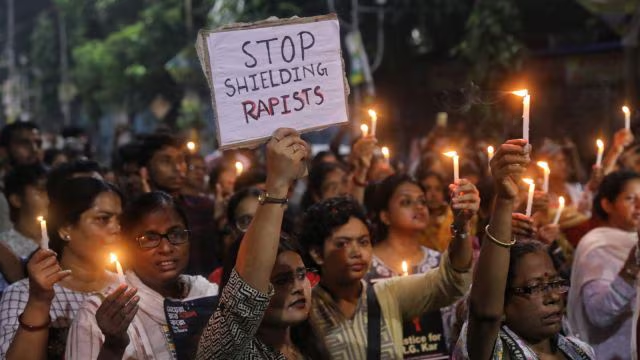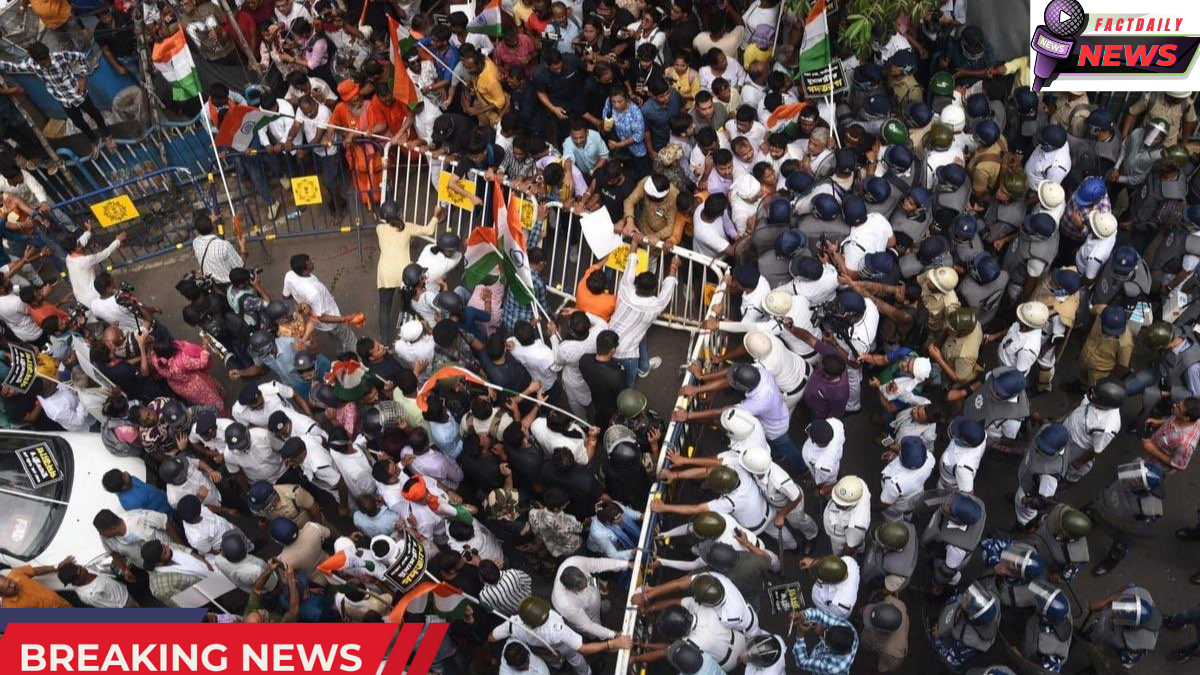Quick summary (for readers who want the essentials)
On the night of 9 August 2024, a 31-year-old postgraduate trainee doctor at R.G. Kar Medical College and Hospital in Kolkata was found brutally assaulted and later declared dead. The case triggered massive protests across West Bengal and the country, a criminal investigation that included the CBI, questions about forensic evidence and chain of custody, and at least one conviction. Survivors’ families and doctors’ groups have continued to demand wider accountability, improved hospital safety and a fuller, transparent probe.
1) What happened — the incident itself (the night of 9 August 2024)
According to police and media reports, the trainee doctor went to rest in a lecture/seminar hall during a night duty shift. Her body was discovered the following morning in the seminar hall; an autopsy later confirmed sexual assault and severe injuries consistent with strangulation and blunt force trauma. The brutality of the crime and the fact that it happened inside a state medical college building sparked widespread outrage.
2) Immediate aftermath — protests and national attention :-
News of the crime ignited protests by junior doctors, students and civil society across Kolkata and other cities. Doctors and medical associations demanded justice, better security in hospitals and stricter enforcement of laws

protecting medical staff on duty. The case quickly became emblematic of concerns around the safety of women working night shifts, especially in places that should be secure.
3) Investigation — who probed it and what was found:-
The case was initially handled locally, then taken over by central agencies due to public pressure and petitions. The Central Bureau of Investigation (CBI) conducted its inquiry and ultimately named a civic volunteer, Sanjay Roy, as the accused. The trial and investigative record drew heavy scrutiny from media and the victim’s family, with questions raised about forensic samples, possible contamination, unexplored witnesses and whether the full chain of culpability had been uncovered.
4) Court outcomes so far:-
In January 2025, a court convicted and sentenced the accused civic volunteer to life imprisonment in connection with the rape and murder. The verdict brought relief to many but did not end calls for a more exhaustive probe into whether others were involved or whether lapses in security and administration at the hospital contributed to the tragedy. The victim’s family publicly stated they believed the investigation had gaps and that the person convicted could not have acted alone.
5) Controversies and unresolved questions:-
Several aspects of the case remain contested:
Forensic irregularities: Independent reports and the family’s legal team pointed to possible contamination or handling problems with samples and DNA evidence. Some forensic findings were described in ways that appeared to conflict with witness statements or with the physical condition of the crime scene.
Unanswered chain-of-custody questions: Media accounts and petitions suggested sealed rooms and material seized from within the hospital that were not fully explained in public filings.
Allegations against officials: At different points, senior hospital administrators and local police officers were scrutinized for possible negligence or tampering with evidence; some were under investigation though criminal charges against them were not always framed or proven publicly.
These unresolved items are why the victim’s family and many campaigners say the conviction — while important — shouldn’t be the end of the story.
6) The one-year mark (latest updates as of Aug 9, 2025):-
On the one-year anniversary of the incident, mass gatherings, torch marches and protests

took place in Kolkata and elsewhere. Parents of the victim and doctor groups marched to the West Bengal secretariat (Nabanna) demanding a fuller probe and systemic reforms. Reports from the day say the marchers attempted to move past barricades and were met with police action; the victim’s mother has alleged she was roughed up and suffered a head injury during the clash. Several news outlets covered a lathi-charge incident and hospitalisation of the victim’s parents after the protest.
Doctors’ associations used the anniversary to stress that promises about safety measures — improved lighting, CCTV, security staff, duty-hour reforms and rapid response systems — remain largely unfulfilled in many hospitals, and that the broader problem of violence against healthcare workers continues.
7) Why this case matters — beyond one crime:-
This incident reverberated because it hit multiple fault lines at once:
- It occurred inside a government medical college — a place expected to protect patients and staff.
- It happened to a female early-career professional working night shifts, spotlighting occupational risks for women.
- The case exposed possible lapses in evidence handling, law-enforcement response and institutional accountability — prompting calls for systemic reform, not just individual punishment.
8) What victims’ families and doctors are demanding now:-
Key demands repeated by protesters, unions and civil society include:
- A transparent, independent and complete investigation into all possible links and persons involved (not just a single accused).
- Re-examination of forensic evidence by neutral, accredited labs if necessary.
- Structural safety upgrades in hospitals (24×7 security, functioning CCTV with offsite backups, access controls, better lighting and patrols).
- Faster and more sensitive complaint redressal systems for staff who face threats on duty.
- These remain live demands as the case continues to shape public debate.
9) Where the legal process stands (what to watch next):-
Although a conviction has been secured in relation to the accused volunteer, families have pursued further legal routes, including petitions and requests for deeper inquiries. The Supreme Court and high courts have seen filings and hearings relating to the investigation at different points, meaning the judicial process may still produce new orders, transfers of records or directions for further inquiry. Observers say judicial scrutiny will be critical if there’s any attempt to re-examine the forensic chain, look for accomplices or investigate institutional responsibility.
10) Practical takeaways — for hospitals, policy makers and citizens:-
- Hospitals should treat safety as a constant operational priority: functioning CCTV, secure night-duty rest areas, biometric access and independent audits of security protocols.
- Law enforcement must ensure transparent chain of custody for forensic material and quick, professional evidence collection.
- Policymakers should fast-track reforms that protect healthcare workers on duty (model rules, funding for security, whistleblower protection for staff).
- Citizens and media need to keep pressure for systemic accountability — convictions are necessary but not always sufficient for wider reform.
Conclusion — justice, transparency and change
The R.G. Kar incident remains a painful reminder of the risks faced by frontline professionals and of how single incidents can expose structural gaps. A criminal conviction matters, but so do unanswered questions about evidence, possible wider culpability, and institutional failures. As protests on the one-year mark show, the victim’s family, doctors and civic groups are determined to press for truth and systemic fixes. For lasting change, judicial clarity, transparent investigations and concrete safety upgrades in hospitals are non-negotiable.
#RGKarIncident #RGKarMedicalCollege #KolkataDoctorCase #RGKarLatestNews2025 #RGKarCaseTimeline #KolkataCrimeNews #CBIInvestigationRGKar #SanjayRoyCase #WestBengalDoctorsProtest #HospitalSafetyIndia #RGKarCaseVerdict #RGKarControversy #KolkataHospitalSecurity #JusticeForRGKarDoctor #RGKarProtests2025





